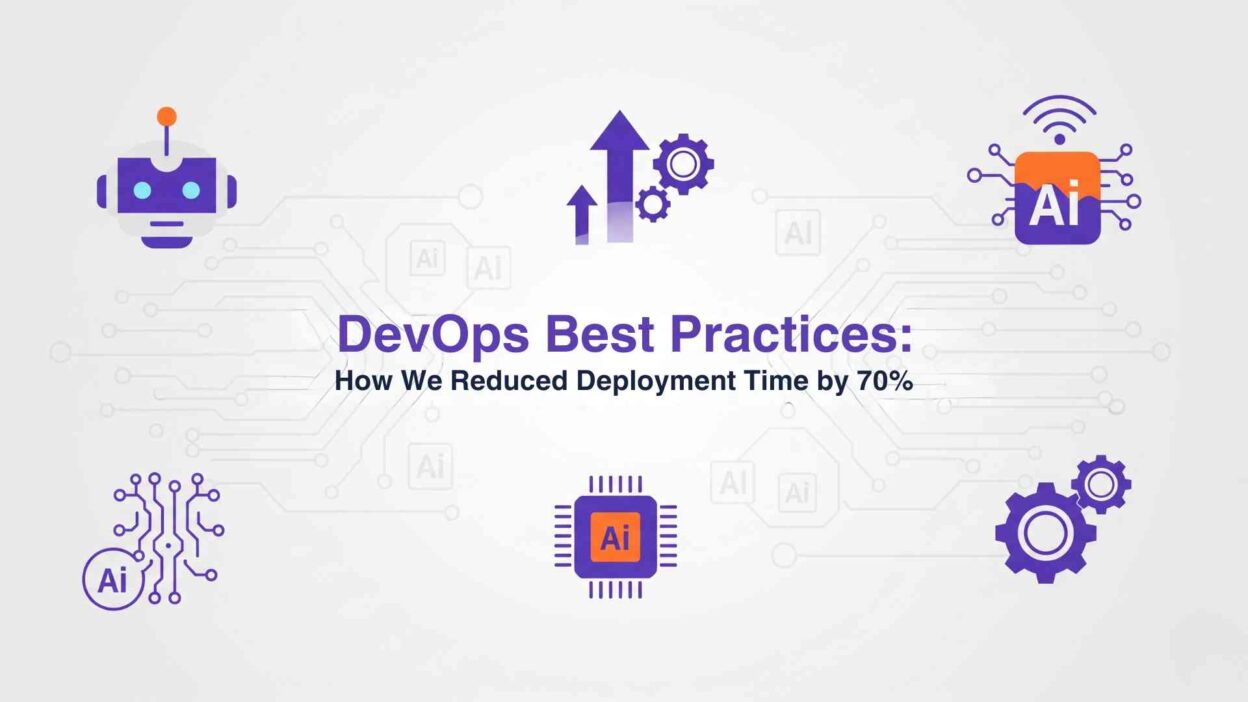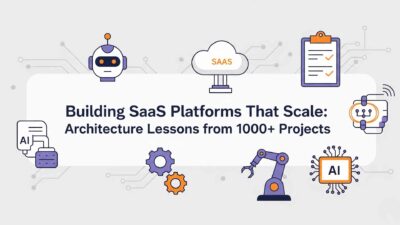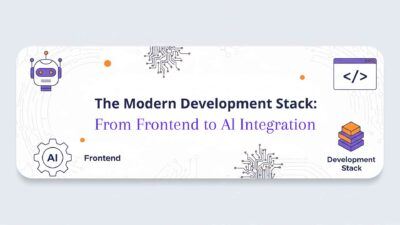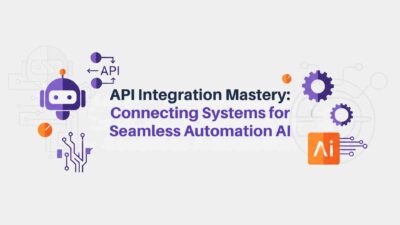In today’s rapidly evolving digital landscape, deployment time has become a critical differentiator between successful organizations and those struggling to keep pace with market demands. Our journey from 8-hour deployment cycles to just 2.4 hours represents more than a simple time reduction—it’s a complete transformation of how we approach software delivery, operational excellence, and business agility.
This dramatic 70% improvement didn’t happen overnight. It required systematic analysis, strategic implementation of DevOps Best Practices, and unwavering commitment to continuous improvement across our entire technology stack. Our experience provides a roadmap for organizations seeking similar transformational results while avoiding common pitfalls that can derail deployment optimization efforts.
Table of Contents
The Challenge: Understanding Our Deployment Bottlenecks
Before implementing any optimization strategies, we conducted comprehensive analysis of our existing deployment pipeline to identify specific bottlenecks that were consuming valuable time and creating unnecessary complexity. Our initial assessment revealed several critical pain points that were directly impacting deployment efficiency.
Manual Process Dependencies dominated our workflow, with over 60% of deployment steps requiring human intervention. These manual processes included configuration file updates, database migrations, security approvals, and post-deployment verification tasks that created unpredictable delays and introduced human error risks.
Sequential Deployment Architecture forced us to deploy components one at a time, creating cascading delays when any single component encountered issues. This approach maximized deployment time while minimizing our ability to quickly identify and resolve problems.
Inadequate Testing Automation meant that quality assurance processes were largely manual, requiring extensive testing cycles between development completion and production deployment. These extended testing periods often revealed issues that required additional development cycles, further extending overall deployment timelines.
Infrastructure Provisioning Delays occurred because our infrastructure deployment relied on manual server configuration and resource allocation processes that could take several hours to complete, even for routine deployments.
Foundation: Establishing DevOps Best Practices Framework
Our transformation began with implementing a comprehensive DevOps Best Practices framework that emphasizes automation, monitoring, and continuous improvement. This foundation provided the structure necessary for systematic optimization while ensuring that improvements would be sustainable and scalable across our organization.
Culture and Collaboration Transformation
DevOps success depends fundamentally on cultural change that breaks down traditional silos between development, operations, and quality assurance teams. We established cross-functional teams with shared responsibility for application performance, deployment success, and operational reliability.
Shared Ownership Model ensures that developers understand operational requirements while operations teams participate actively in application development decisions. This collaboration eliminates the traditional “throw it over the wall” mentality that creates deployment friction and blame cycles.
Continuous Learning Culture encourages experimentation, knowledge sharing, and post-incident learning that drives systematic improvement. Regular retrospectives analyze both successful deployments and issues to identify optimization opportunities and prevent recurring problems.
Strategic Implementation: Phase 1 – Pipeline Automation Revolution
Automated CI/CD Pipeline Development
According to industry research, HNI reduced deployment time by 60x by eliminating manual steps through pipelines that also incorporate scheduling and dependency execution. Our transformation followed similar principles by implementing comprehensive automation that eliminated human intervention from routine deployment tasks.
Jenkins Integration and Workflow Orchestration became the backbone of our automated deployment system. We configured sophisticated pipelines that automatically trigger builds based on code commits, execute comprehensive test suites, and deploy applications to appropriate environments based on branch strategies and approval workflows.
Automated Testing Integration ensures that every code change passes through multiple testing layers including unit tests, integration tests, security scans, and performance validation before reaching production environments. This automation reduced our testing cycle from 4 hours to 35 minutes while improving overall code quality.
Configuration Management Automation eliminated manual configuration file management through tools like Ansible and Terraform. These systems automatically provision infrastructure, configure applications, and maintain consistency across all deployment environments.
Parallel Processing Implementation
One of the most significant improvements came from implementing parallel deployment strategies that allow multiple components to deploy simultaneously rather than sequentially. This approach dramatically reduced overall deployment time while improving our ability to isolate and resolve issues quickly.
Microservices Architecture Adoption enabled independent deployment of application components, allowing teams to release features without coordinating with other development teams or waiting for unrelated components to complete their deployment cycles.
Container Orchestration with Kubernetes provides sophisticated deployment management that automatically handles load balancing, health checks, and rolling updates across multiple application instances simultaneously.
Strategic Implementation: Phase 2 – Advanced Optimization Techniques
Infrastructure as Code (IaC) Implementation
Terraform and CloudFormation templates now define our entire infrastructure stack, enabling consistent, repeatable deployments across development, staging, and production environments. This approach eliminated infrastructure configuration drift while reducing provisioning time from hours to minutes.
Version-Controlled Infrastructure ensures that infrastructure changes follow the same review and approval processes as application code, preventing unauthorized modifications and enabling rapid rollback capabilities when issues occur.
Automated Environment Provisioning creates ephemeral environments for feature testing and validation, reducing resource conflicts while enabling parallel development workflows that accelerate overall delivery timelines.
Database Migration Automation
Database schema changes traditionally represented one of our most time-consuming deployment components. Industry case studies show organizations achieving deployment time reductions from 2 days to 8 hours through comprehensive DevOps implementation. Our database automation strategy contributed significantly to our overall time reduction.
Automated Schema Migration Tools like Flyway and Liquibase manage database changes through version-controlled migration scripts that execute automatically during deployment processes. These tools ensure consistent database state across all environments while providing rollback capabilities for problematic migrations.
Blue-Green Database Deployment enables zero-downtime database updates by maintaining parallel database instances during migration processes. This approach eliminates service interruptions while providing immediate rollback capabilities if issues are discovered post-deployment.
Strategic Implementation: Phase 3 – Monitoring and Optimization Excellence
Comprehensive Monitoring and Observability
According to DevOps experts, monitoring deployment metrics regularly through DevOps dashboards delivers real-time insights into application performance by tracking key metrics including lead time for changes, deployment frequency, time to restore service, and change failure rate. Our monitoring implementation provides the visibility necessary for continuous optimization.
Real-Time Performance Dashboards display critical metrics including deployment success rates, performance indicators, error rates, and user experience measurements. These dashboards enable immediate identification of issues and provide data-driven insights for continuous improvement initiatives.
Automated Alerting Systems notify appropriate team members when deployments encounter problems or when performance metrics exceed predefined thresholds. This proactive monitoring approach enables rapid response to issues before they impact user experiences.
Predictive Analytics Integration uses historical deployment data to identify patterns, predict potential issues, and recommend optimization opportunities. Machine learning algorithms analyze deployment success factors to suggest improvements for future releases.
Performance Optimization Through Metrics
Data-driven optimization became essential for achieving our 70% deployment time reduction. We established comprehensive metrics collection and analysis processes that guide continuous improvement efforts and validate optimization strategies.
DORA Metrics Implementation tracks deployment frequency, lead time for changes, mean time to recovery (MTTR), and change failure rate. These industry-standard metrics provide objective measurements of our DevOps maturity and improvement progress.
Custom Business Metrics measure deployment impact on business objectives including revenue generation, customer satisfaction, and operational efficiency. These metrics ensure that optimization efforts align with broader organizational goals rather than just technical improvements.
Advanced DevOps Best Practices: Emerging Technologies Integration
Artificial Intelligence and Machine Learning Integration
AI-powered tools increasingly support deployment optimization through intelligent analysis of deployment patterns, automated issue detection, and predictive failure prevention. These technologies represent the next frontier in DevOps Best Practices evolution.
Automated Anomaly Detection uses machine learning algorithms to identify unusual patterns in application performance, user behavior, or system metrics that might indicate deployment-related issues requiring immediate attention.
Intelligent Resource Allocation automatically adjusts infrastructure resources based on predicted demand patterns, ensuring optimal performance during peak usage periods while minimizing costs during low-traffic periods.
Smart Rollback Decisions analyze multiple data sources including performance metrics, error rates, and user feedback to automatically trigger rollbacks when deployments negatively impact user experiences or business operations.
Security Integration: DevSecOps Implementation
Security automation became integral to our deployment optimization strategy, ensuring that improved speed doesn’t compromise application or data security. DevSecOps practices integrate security testing and compliance validation directly into deployment pipelines without creating bottlenecks.
Automated Security Scanning includes static code analysis, dependency vulnerability assessment, container security validation, and infrastructure compliance checking that executes automatically during deployment processes.
Compliance-as-Code implements regulatory requirements and security policies through automated validation rules that prevent non-compliant deployments from reaching production environments.
Zero-Trust Architecture Implementation assumes no implicit trust within deployment processes, requiring verification at every step while maintaining deployment speed through automated validation processes.
Results Analysis: Quantifying Our Transformation Success
Primary Performance Improvements
Our systematic implementation of DevOps Best Practices delivered measurable improvements across multiple performance dimensions beyond the headline 70% deployment time reduction.
Deployment Frequency Increase from weekly releases to multiple daily deployments enables rapid feature delivery and faster response to market opportunities and customer feedback.
Change Failure Rate Reduction from 15% to 3% demonstrates improved quality and reliability of our deployment processes while reducing time spent on issue resolution and rollbacks.
Mean Time to Recovery (MTTR) Improvement from 4 hours to 45 minutes means that when issues do occur, our teams can identify, resolve, and recover much more quickly than before optimization.
Quality and Reliability Enhancements
Research shows that DevOps implementations typically achieve 50% reduction in deployment time and 70% decrease in bugs, along with significant improvements in overall system reliability. Our results align closely with these industry benchmarks while providing additional business value.
Code Quality Improvements through automated testing and code review processes resulted in 65% fewer production bugs and significantly reduced technical debt accumulation over time.
System Reliability Enhancement through comprehensive monitoring and automated recovery processes increased overall system uptime from 99.2% to 99.8%, directly impacting customer satisfaction and revenue protection.
Cost-Benefit Analysis: ROI of DevOps Best Practices
Direct Cost Savings
The financial impact of our deployment optimization extends well beyond time savings, creating substantial value across multiple cost categories that justify the investment in DevOps Best Practices implementation.
Labor Cost Reduction through automation eliminated approximately 30 hours of manual work per week, allowing team members to focus on high-value activities like feature development, performance optimization, and customer experience improvement.
Infrastructure Cost Optimization through automated resource management and efficient deployment strategies reduced cloud infrastructure costs by 25% while improving overall system performance and reliability.
Opportunity Cost Recovery by reducing deployment time enables faster time-to-market for new features and competitive advantages, directly contributing to revenue generation and market position improvement.
Risk Mitigation Value
Improved deployment reliability reduces business risks associated with system outages, data loss, and customer experience degradation. Our enhanced processes provide quantifiable risk reduction that protects revenue and reputation.
Compliance Cost Reduction through automated compliance validation eliminates manual audit preparation time while ensuring consistent adherence to regulatory requirements across all deployments.
Business Continuity Enhancement through improved MTTR and automated recovery processes reduces potential revenue impact of system issues while protecting customer relationships and brand reputation.
Lessons Learned: Critical Success Factors
Change Management and Team Adoption
Our experience revealed that technical implementation represents only 40% of successful DevOps transformation—the remaining 60% involves cultural change, skill development, and organizational alignment. Several critical factors determined our success in achieving sustainable improvement.
Executive Sponsorship and Resource Commitment proved essential for overcoming resistance to change and securing necessary investments in tools, training, and process redesign. Leadership support enabled cross-functional collaboration and sustained improvement efforts.
Incremental Implementation Strategy allowed teams to adapt gradually to new processes while maintaining operational stability. This approach reduced implementation risks while building confidence and expertise systematically.
Continuous Skill Development through training programs, certifications, and knowledge sharing ensured that team members could effectively leverage new tools and processes. Investment in people capabilities directly correlated with implementation success rates.
Common Pitfalls and How We Avoided Them
Technology-First Approaches
Many organizations focus exclusively on tool implementation without addressing underlying process issues or cultural barriers. Our success came from balancing technology adoption with process improvement and cultural transformation.
Inadequate Measurement and Monitoring can prevent organizations from understanding whether optimization efforts are delivering expected results. Comprehensive metrics collection and analysis enabled continuous improvement and validated our optimization strategies.
Insufficient Testing Automation often creates bottlenecks that offset gains from other optimization efforts. Our comprehensive testing automation strategy ensured that quality improvements supported rather than hindered deployment speed improvements.
Advanced Deployment Strategies: Beyond Basic Automation
Blue-Green and Canary Deployment Implementation
Advanced deployment strategies enabled us to achieve zero-downtime deployments while minimizing risks associated with new releases. These techniques represent sophisticated DevOps Best Practices that require careful planning and implementation.
Blue-Green Deployment Strategy maintains two identical production environments, enabling instant switching between versions while providing immediate rollback capabilities if issues are discovered post-deployment.
Canary Deployment Processes gradually route increasing percentages of user traffic to new application versions, allowing real-world validation while limiting potential impact of issues on overall user base.
Feature Flag Implementation enables dynamic feature activation and deactivation without requiring new deployments, providing unprecedented flexibility in feature management and risk mitigation.
Infrastructure Optimization: Cloud-Native Advantages
Container Orchestration and Microservices
Our migration to containerized applications and microservices architecture contributed significantly to deployment time reduction while improving overall system scalability and maintainability.
Docker Container Standardization ensures consistent application runtime environments across development, testing, and production while eliminating “works on my machine” issues that traditionally complicated deployment processes.
Kubernetes Orchestration provides sophisticated deployment management including automatic scaling, health monitoring, and load balancing that reduces manual operational overhead while improving system reliability.
Service Mesh Implementation with tools like Istio provides advanced traffic management, security policies, and observability features that enhance deployment capabilities while maintaining operational simplicity.
Future Evolution: Emerging Trends in DevOps Best Practices
GitOps and Infrastructure Automation
GitOps represents the next evolution in deployment automation, using Git repositories as single sources of truth for both application code and infrastructure configuration. This approach extends version control benefits to infrastructure management while enabling sophisticated automation workflows.
Declarative Infrastructure Management through GitOps ensures that infrastructure state matches desired configuration automatically, reducing configuration drift and enabling automated recovery from infrastructure issues.
Automated Compliance and Security integration into GitOps workflows provides continuous validation of security policies and regulatory requirements without impeding deployment processes.
Platform Engineering and Internal Developer Platforms
The emergence of Platform Engineering as a discipline represents a strategic evolution in DevOps Best Practices, focusing on creating internal platforms that abstract infrastructure complexity while providing developers with self-service capabilities.
Internal Developer Platform (IDP) Development provides standardized, automated pathways for application deployment while maintaining flexibility for specific requirements and use cases.
Self-Service Infrastructure Provisioning enables development teams to create and manage infrastructure resources independently while maintaining governance and cost control through automated policies and approval workflows.
Organizational Scaling: DevOps Best Practices for Large Teams
Multi-Team Coordination and Standardization
Our success scaling DevOps Best Practices across multiple teams required careful attention to standardization while maintaining team autonomy and innovation capabilities.
Standardized Pipeline Templates provide consistent deployment processes across teams while allowing customization for specific application requirements and technology stacks.
Cross-Team Knowledge Sharing through communities of practice, documentation standards, and rotation programs ensures that optimization insights and best practices propagate throughout the organization.
Federated DevOps Model balances centralized standards and tooling with distributed implementation and customization, enabling scale while maintaining agility and innovation.
Measuring Success: Beyond Deployment Time
Business Impact Metrics
While our 70% deployment time reduction represents a significant achievement, the broader business impact of our DevOps Best Practices implementation extends across multiple value dimensions that contribute to organizational success.
Customer Satisfaction Improvement through faster feature delivery and improved system reliability directly correlates with increased customer retention and revenue growth.
Developer Productivity Enhancement through automated processes and improved tooling enables teams to focus on high-value activities while reducing frustration and burnout associated with manual operational tasks.
Innovation Acceleration by reducing time-to-market for new features enables rapid experimentation and faster response to market opportunities and competitive threats.
Continuous Improvement: Sustaining Optimization Gains
Regular Process Review and Optimization
Sustainable DevOps Best Practices require ongoing attention to process improvement, technology evolution, and changing business requirements. Our optimization journey continues through systematic review and enhancement processes.
Monthly Performance Review Cycles analyze deployment metrics, identify emerging bottlenecks, and evaluate optimization opportunities to ensure continued improvement momentum.
Technology Evaluation and Adoption processes assess emerging tools and techniques for potential integration into our DevOps toolchain while managing risks associated with technology changes.
Feedback-Driven Improvement incorporates insights from development teams, operations staff, and business stakeholders to ensure that optimization efforts align with actual needs and pain points.
Our journey from 8-hour deployments to 2.4-hour deployments represents more than technical optimization—it demonstrates how systematic implementation of DevOps Best Practices can transform organizational capabilities while delivering measurable business value. The 70% reduction in deployment time enabled faster innovation, improved customer experiences, and enhanced competitive positioning that continues to generate returns on our optimization investment.
Success in DevOps Best Practices implementation requires balancing technical excellence with cultural transformation, ensuring that improvements are sustainable and scalable across growing organizations. Our experience provides a roadmap for organizations seeking similar transformational results while avoiding common pitfalls that can undermine optimization efforts.
The future of deployment optimization lies in continued automation, intelligent systems integration, and platform-based approaches that further abstract complexity while maintaining operational excellence. Organizations that embrace these evolving DevOps Best Practices will continue to gain competitive advantages through enhanced agility, reliability, and innovation capabilities.
📧 Email: [email protected]
📞 Phone: 1-347-543-4290
🌐 Website: emasterlabs.com
📍 Address: 1942 Broadway Suite 314 Boulder, CO 80302 USA
Engineer Master Labs – You Think, We Automate, You Profit
Competitors Are Scaling Faster AI





